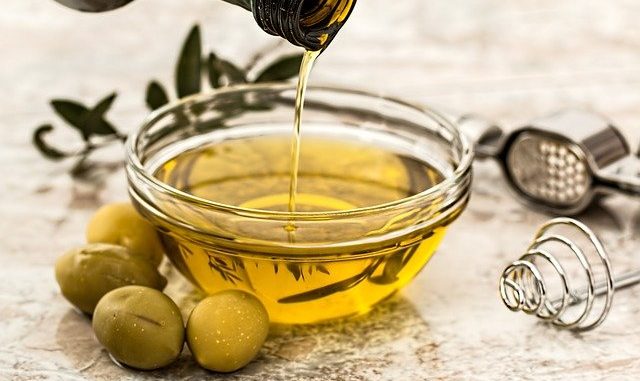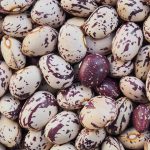
Olive oil, that slightly greenish golden unctuous liquid filling so many bottles is one of the key elements in a great dressing or when lightly frying a range of foods and vegetables. It is an oil which truly symbolizes the Mediterranean Sea and is widely produced from countries all bordering that great body of water. We use it widely in all Italian dishes and having just come back from Umbria, it was amazing to see the vast range of olive oils available in their supermarkets. Nothing more enjoyable indeed, than dipping very crusty bread into a slightly bitter distinctive pool of oil. In fact continental breakfasts need just be that.
Olive oil is available in a range of grades. There is a remarkable range in flavour and quality depending on the country of origin, olive cultivar and level of diligence in processing. When we have to talk about oil we need to consider extra virgin olive oil because this is liquid gold to many suppliers. It is at the pinnacle of quality and supply for its unique aroma, flavour and health benefits.
Production of Olive Oil
The cultivation of olives (Olea europea L.) has been a love affair in Mediterranean countries for thousands of years. The European Union produces over 90% of the world’s supply of olive oil with the remainder produced in Australia, Argentina, South Africa and California (US).
Olives are harvested between October and December where they are allowed to fall onto sheets by gently shaking the tree. The fruits are collected up and crushed to produce a paste. This paste is malaxed to encourage the oil drops to coalesce. The oily phase is separated from the solid phase using centrifugation or by pressing.
Flavour
The olive (Olea europeae L.) has been in cultivation since the Roman times. In fact, there are groves in Italy which date from that time with trees that would have around during the time of the emperors.

That distinctive flavour is now well characterised and individual cultivars and styles of pressing to create the different aromas and tastes are now understood. A very comprehensive set of reviews describes the flavour componentry of olive oil (Kiritsakis, 1998; Kalua et al., 2007).
Good quality olive oil has a subtle flavour with a hint of green and slightly fruity character. These seem to be prominent in more expensive oils. If the olives are not at their peak, then other undesirable flavours become prominent which have been invariably described as rancid, wine or vinegar, musty, rotten vegetable and muddy. A great deal of effort has been devoted to ensuring quality is high by developing methods for checking adulteration.
Although oleic acid is the main lipid found in oil, the flavour is contributed to by mostly long-chain α, β -unsaturated aldehydes or 2-E-alkenals. A number have been found to have antimicrobial properties (Kubo et al., 1995). The same researchers found these aldehydes to inhibit the oxidation of I-3,4-dihydroxyphenylalanine (l-DOPA) catalyzed by mushroom tyrosinase, which hints at a strong anti-browning benefit (Kubo and Kinst-Hori, 1999).
Adulteration of Olive Oils
Olive oil, especially extra virgin olive oil has become a valuable commodity around the world. It is in high demand around the world and commands a high cost. Unfortunately, fraudsters have indulged widely in adulteration of olive oil and it’s now widespread. There have been a number of contamination scandals over many years that have spoilt the reputation of suppliers and dealers of this oil. It has also led to a major healthy health and safety issue for consumers tricked into purchasing EVOO containing toxic compounds.
Adulteration is by no means constrained to olive oil either as others such as walnut, avocado etc. have started to be blighted by this situation.
The main methods available have revolved around the application of Fourier transform infrared spectroscopy (Tay et al., 2002).
The most common adulterant is to add sunflower oil which is considerably cheaper and whose colour is disguised by the pale gold-green of olive oil. Other oils include OPO, rapeseed oil, hazelnut oil, corn oil, walnut oil, and soybean oil .
General Benefits
Olive oil has a high antioxidant potential and has been a key component of the beneficial Mediterranean Diet. The hydrophilic phenols are the most abundant antioxidants of virgin olive oil besides tocopherol and carotenes. The latter contributing some of the green-yellow colour. There are also a number of flavonoids and lignans as well as phenol derived alcohols and phenolic acids (Servili et al., 1999; 2004). The bioavailability of these phenolic compounds in human nutrition studies has also demonstrated how valuable the oil is (Vissers et al., 2004). It seems that of the few ‘in vivo’ studies conducted, the phenolic compounds in extra virgin olive oil may make a major contribution to our diet but the results obtained in the randomised, controlled cross-over studies are not clear-cut (Fitό et al., 2005; Visioli et al., 2005; Covas et al., 2006).
Olive Oil Benefits In Reducing Cardiovascular Disease
A very comprehensive review of studies on olive oil covers its role in reducing cardiovascular disease generally (Covas, 2007) and hypertension (Perona et al., 2006). A very recent well-designed observational study shows that when olive oil is a regular part of the diet it can significantly reduce the likelihood of a stroke in the 65 and over age group (Samieri et al., 2011). This study relied on dietary evidence and correlations with other key lifestyle factors such as dietary habit, exercise levels and assessment of other stroke risk factors from 7,625 participants followed over 5 years living in three regions of France. Heavy olive oil users reduced their odds of a stroke by 41%. Another part of the study examined oleic acid levels in blood from 1,245 adults of a similar age range. Participants in the top third with the highest oleic acid levels were less likely to suffer stroke by 73% compared to the third with the lowest levels. The researchers were clear that further study was needed to provide a more direct relationship between stroke risk and olive oil consumption because so many other factors play a part.

A much more recent study has shown that olive oil improves endothelial function in patients with early onset atherosclerosis. A daily intake of 30ml of olive oil alone and 30 ml of epigallocatechin 3-gallate (EGCG) infused olive oil was compared. Endothelial function, levels of inflammation and oxidative stress were examined after 4 months of ingestion (Widmer et al., 2012). The study showed that when the two groups results were combined, it was the olive oil which significantly improved endothelial function. There were no significant differences in any results between the two groups. Interestingly, with olive oil supplementation, there was a significant reduction in inflammation.
I’d recommend visiting the following web-sites www.oliveoiltimes.com and http://www.oliveoilsource.com as they both produce viewer friendly articles and posts on the benefits of olive oil in health and in the food industry.
References
Covas, M.I. (2007) Olive oil and the cardiovascular system. Pharmacol. Res. 55, pp. 175–186.
Covas, M. I., de la Torre, K., Farré-Albaladejo, M., Kaikkonen, J., et al., (2006) Postprandial LDL phenolic content and LDL oxidation is modulated by olive oil phenolic compound in humans. Free Radic. Biol. Med. 40, pp. 608 –616.
Fitό, M., Cladellas, M., de la Torre, R., MartÍ, J., et al., (2005) Antioxidant effect of virgin olive oil in patients with stable coronary heart disease: A randomised, crossover, controlled, clinical trial. Atherosclerosis 181, pp. 149 –158.
Kalua, C. M., Allen, M. S., Bedgood, D. R., Jr., Bishop, A. G., Prenzler, P. D., & Robards, K. (2007). Olive oil volatile compounds, flavour development and quality: a critical review. Food Chem., 100, pp. 273–286. Kiritsakis, A. K. (1998). Flavor components of olive oil – a review. JAOCS, 75(6), pp. 673–681.
Kubo, A., Lunde, C.S., Kubo, I. (1995) Antimicrobial activity of the olive oil flavor compounds. J. Agric. Food Chem. 43 pp. 1629–1633
Kubo, I., Kinst-Hori, I. (1999) Tyrosinase inhibitory activity of the olive oil flavor compounds. J. Agric. Food Chem. 47, pp. 4574- 4578.
Lopez-Feria, S., Cardenas, S., Garcia-Mesa, J.A., Fernandez-Hernandez, A., Valcarcel, M. (2007) Quantification of the intensity of virgin olive oil sensory attributes by direct coupling headspace-mass spectrometry and multivariate calibration techniques. J. Chromatogr. A, 1147 (2), pp. 144-152.
Meenu, M., Cai, Q., & Xu, B. (2019). A critical review on analytical techniques to detect adulteration of extra virgin olive oil. Trends in Food Science & Technology, 91, pp. 391-408 (Article).
Perona, J.S., Cabello-Moruno, R., Ruız-Gutıerrez, V. (2006) The role of virgin olive oil components in the modulation of endothelial function. J. Nutr. Biochem. 17 pp. 429–45.
Samieri, C., Féart, C., Proust-Lima, C., Peuchant, E., Tzourio, C., Stapf, C., Berr, C., Barberger-Gateau, P. 2011. Olive oil consumption, plasma oleic acid, and stroke incidence. Neurology. Published online before print, June 15. doi: 10.1212/ WNL.0b013e318220abeb.
Servili, M., Baldioli, M., Selvaggini, R., Miniati, E., Macchioni, A., Montedoro, G.F. (1999) HPLC evaluation of phenols in olive fruit, virgin olive oil, vegetation waters and pomace and 1Dand 2D-NMR characterization. JAOCS 76 pp. 873–82.
Servili M, Selvaggini R, Esposto S, Taticchi A, Montedoro GF, Morozzi G. Health and sensory properties of virgin olive oil hydrophilic phenols: agronomic and technological aspects of production that affect their occurrence in the oil. J. Chromatogr. A. 1054 pp. 113–127
Tay, A., Singh, R. K., Krishnan, S. S., & Gore, J. P. (2002). Authentication of olive oil adulterated with vegetable oils using Fourier transform infrared spectroscopy. LWT-Food Science and Technology, 35(1), pp. 99-103 (Article).
Visioli, F., Caruso, D., Grande, S., Bosisio, R., et al., (2005) Virgin olive oil study (VOLOS): Vasoprotective potential of extra virgin olive oil in mildly dyslipidemic patients. Eur. J. Nutr. 44, pp. 121–127.
Vissers, M.N., Zock P.L., Katan M.B. (2004) Bioavailability and antioxidant effects of olive oil phenols in humans: a review. Eur J Clin. Nutr. 58 pp. 955–65.
Widmer, R., Freund, M., Flammer, A., Sexton, J. et al., (2012) Beneficial effects of polyphenol-rich olive oil in patients with early atherosclerosis. Eur. J. Nutr. doi. 10.1007/s00394–012-0433–2.



Nice article. Would you be writing food essays as well on olive oils?
My opinion is that olive oil has a number of benefits and there is a fair bit of information out there since this article was written. One book has recently been written which is worth examining called:-
The Olive Oil Diet: Nutritional Secrets of the Original Superfood (London, UK: Little Brown, 2016).
I’ve been following a vegan diet for many years and have olive oil as part of this. I think you should follow a strong exercise regime as well just to be absolutely sure of better health.
Pretty nice post about olive oil. I just stumbled upon your blog for Foodwrite and I’ve often really enjoyed surfing around your blog posts.
After all I will be subscribing to your feed and I hope you write again soon! Incidentally, you should try a variety of olive oil made from the fruit of Puglia, its the best. The trees are that old I think they have been around when Jesus was born.